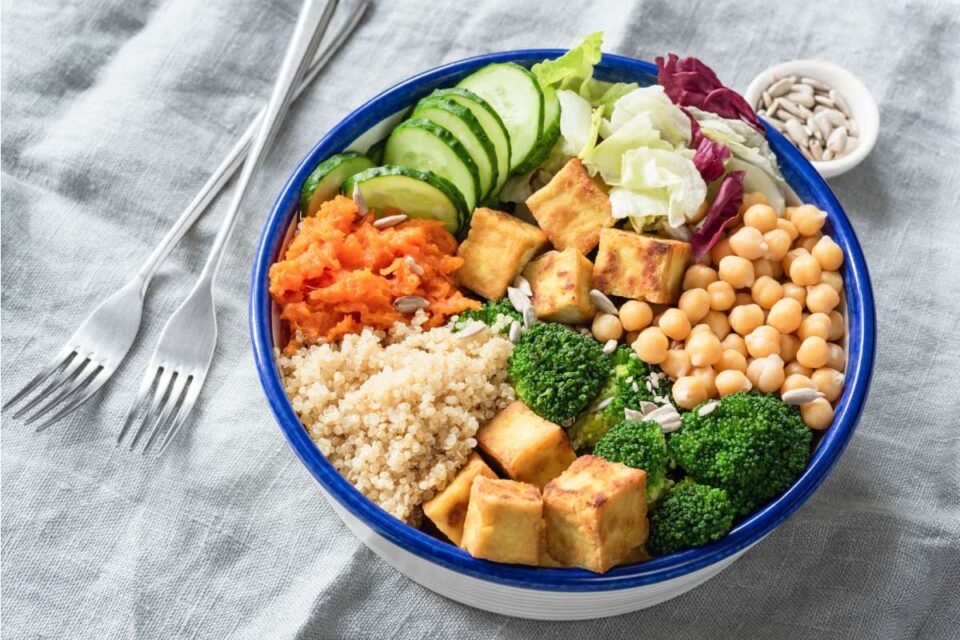If you have recently converted to a meat-free lifestyle, you may be concerned about how you are going to get enough protein in your diet without eating meat. If you are, I have some great news for you! You don’t have to eat meat, or meat-based products, to consume protein. Certain plant foods contain much more protein than others, so you do need to be mindful of what you eat in order to make sure you are getting enough protein in. Here are 7 evidence based ways of ensuring you get enough protein in with your meat-free diet.
Table of Contents
Seitan
Whilst this might be pronounced remarkably similar to a certain fork-tailed meanie (…SAY-tan…), it is quite the opposite. “Wheat meat” has been around for hundreds of years, only now it has a newer name. It is made from wheat but doesn’t have a whole lot in common with bread or flour, apart from the gluten content, that is. Seitan becomes very similar to meat in terms of looks and texture once it is cooked, which is why it is such a popular meat substitute. It is also very high in protein; up to three quarters of it is protein, which is why it is number one on our list on protein-rich meat substitutes.
Lentils
There are 18 grams of protein in every cup of cooked lentils, which makes them a fantastic source of protein. Lentils are also incredibly versatile, so you can cook them up in various different yet tasty ways – my recommendation is to add them to soups this winter for a hearty meal that is packed with protein.
Hemp Seeds
Yes, for eating hemp seeds do indeed come from the Cannabis sativa plant, but they only contain trace amounts of THC – we’ll let you decide how you want to take that bit of news on CBD’s little children. Hempseed contains 10 grams of protein per 28 grams, which is a pretty powerful protein for such a little seed. You can sprinkle these on a salad or onto your favorite yoghurt.
Supplements
These days you can get your required daily protein in with tasty shakes and smoothies, all you need is the powdered mix, and you are good to go. You can also bake with these mixes so if you get tired of those you can mix them into some protein packed date bars or muffins. If you’re in a hurry and don’t have time to mix up a smoothie, grab a protein infused Trimino water – yep, protein water is definitely a thing now, and it’s delicious. You’re welcome.
Nutritional Yeast
Not just for hippies and hipsters, nutritional yeast is an excellent source of protein. You’ll find it in most stores; it is sold as a yellow powder, or as flakes. Nutritional yeast can be added to most meat-free dishes. Its distinct cheesy flavour makes it a great addition to meat-free nachos, sauces and mashed potatoes – you can even sprinkle it over popcorn for an added protein punch to your favourite snack!
Chickpeas
Also known as garbanzo beans, chickpeas are a type of legume with a high protein count. Coming in at 15 grams for every cooked cup of these delicious ‘not-quite-beans’, chickpeas are also packed with iron, potassium and fibre. The benefit of eating them doesn’t end there either, they are also a complex carb, and many studies have shown that they can decrease cholesterol levels as well as reduce your blood pressure.
Tofu
The Tofu is a firm favourite amongst the vegan and meat-free communities, and for a good reason. Tofu, and its cousins, Tempeh and Edamame, are from the family of foods made from soybeans. The Tofu is made from the soybean curds; these are pressed together in a process not unlike the process used in making cheese. Tofu is considered a whole protein – this means that it contains all the essential amino acids your body requires to function optimally. The best thing about tofu is that it doesn’t have much flavour on its own, it absorbs the flavour of what it is cooked with, so you can add it to pretty much any dish to give it a higher protein value.
There really is no need to panic about not getting enough protein in, or not being able to live an energetic life if you cut out meat completely. Whether it is for health reasons, fiscal reasons or environmental reasons, cutting out meat doesn’t mean cutting out protein. There are other ways to live a happy, protein-enriched life.

